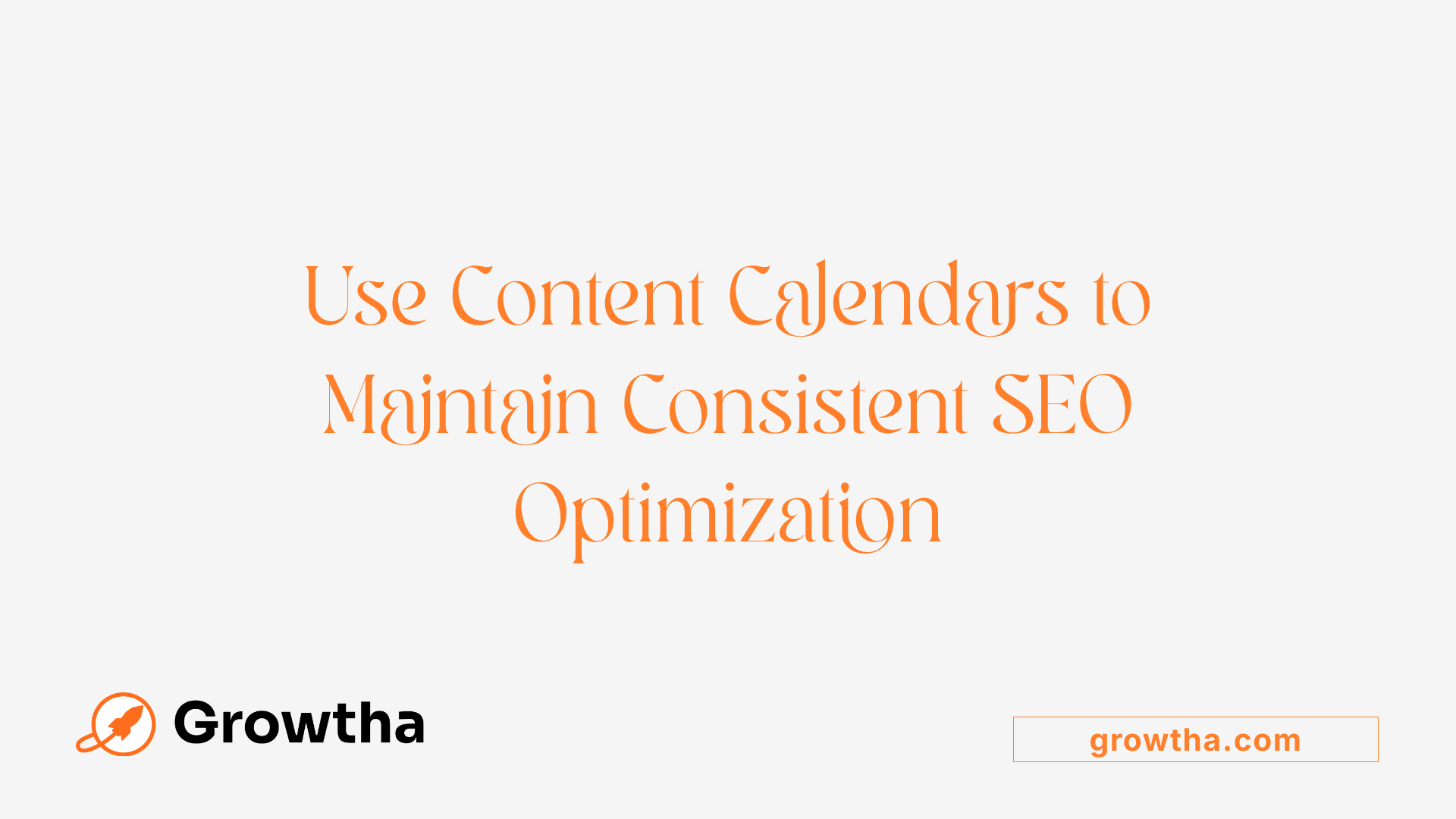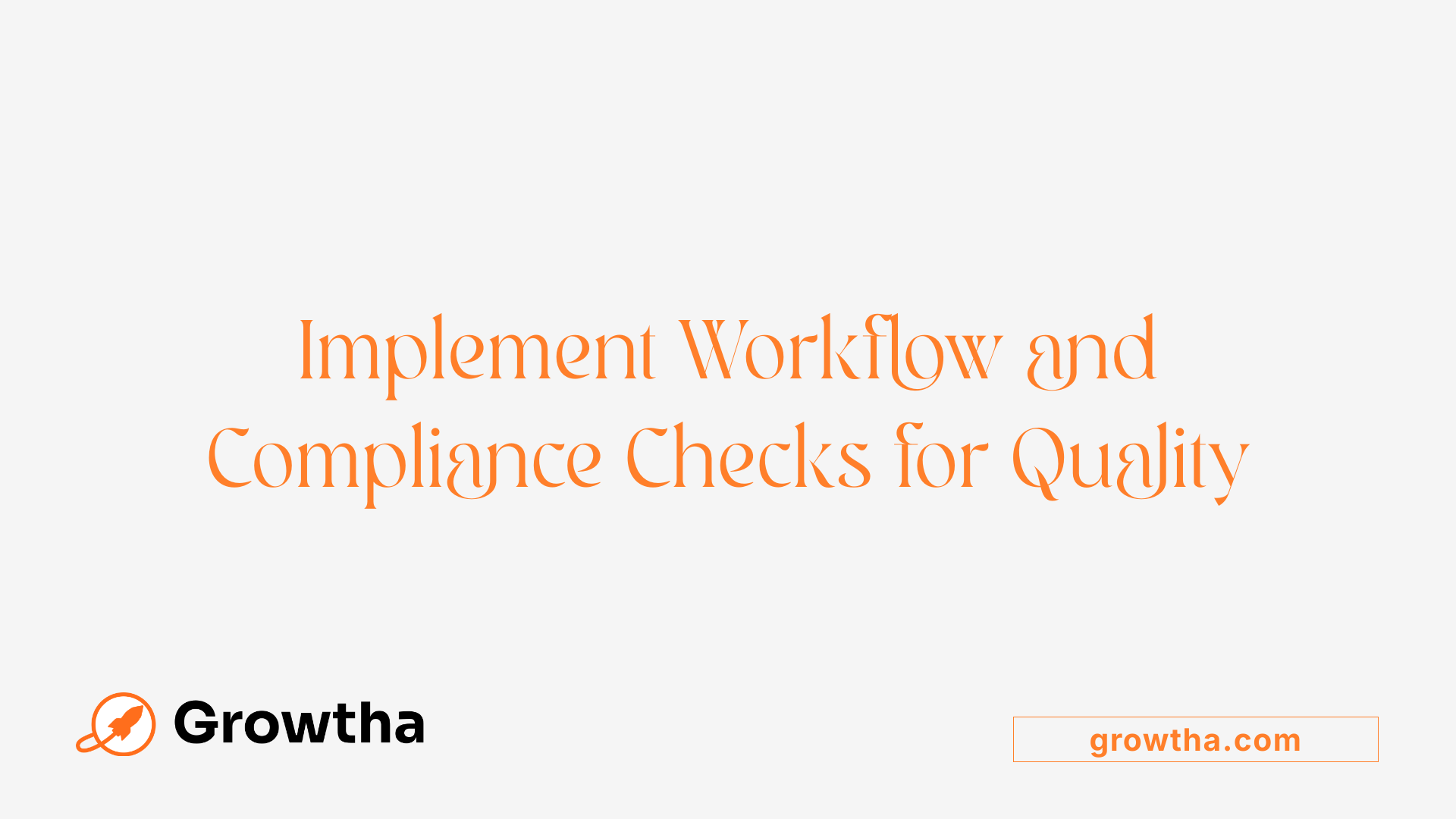How to Create a Healthcare SEO Content Calendar
Boost Your Healthcare Visibility with a Strategic Content Calendar


How to Create a Healthcare SEO Content Calendar
Mastering the Art of Healthcare SEO Content Planning
Developing a comprehensive healthcare SEO content calendar is essential for increasing online presence, attracting new patients, and establishing authority in the healthcare industry. This guide explores the steps, strategies, tools, and best practices needed to craft an effective content calendar that aligns with SEO objectives, regulatory standards, and audience needs, ensuring your healthcare organization remains competitive and trustworthy in the digital space.
Understanding the Foundation of Healthcare Content Planning
 Developing an effective healthcare content strategy begins with clearly defining your goals and understanding your target audience. Whether aiming to inform, educate, or drive engagement, setting measurable objectives like increasing brand awareness, patient education, or website traffic directs your efforts.
Developing an effective healthcare content strategy begins with clearly defining your goals and understanding your target audience. Whether aiming to inform, educate, or drive engagement, setting measurable objectives like increasing brand awareness, patient education, or website traffic directs your efforts.
Identifying your target audience is essential. This includes patients, healthcare professionals, caregivers, and industry stakeholders. Creating detailed personas based on demographics, needs, and online behavior helps tailor relevant content that resonates.
Conducting a comprehensive content audit provides insights into existing materials. Review your website and social media to identify strengths, gaps, and outdated information. This audit guides your content gap analysis, revealing areas where new content or updates are needed to meet audience needs and optimize engagement.
Key health topics should be selected based on patient needs, trending health issues, and common searches. Brainstorm content ideas such as health tips, success stories, research updates, and preventive care relevant to your audience. This focus ensures your content remains valuable and accurate.
Establishing compliance standards is fundamental in healthcare. Ensure all content adheres to legal and ethical guidelines like HIPAA, and undergoes review by qualified healthcare professionals. This preserves credibility and builds trust.
More detailed planning involves integrating these elements into your content calendar and workflow, setting the stage for an organized and impactful healthcare content plan.
For those starting from scratch, understanding the foundational steps—goal setting, audience analysis, content review, and compliance—is crucial. This approach ensures your healthcare content strategy is both effective and sustainable.
Searching for further insights? Consider exploring "Healthcare content strategy foundation and planning" to deepen your understanding.
Selecting Content Types and Channels for Healthcare SEO
 In healthcare SEO, choosing the right content formats and distribution channels is essential to reach and engage your target audience effectively. Different content types serve various purposes — blogs, videos, infographics, patient testimonials, and updates — each playing a role in education, trust-building, and conversion.
In healthcare SEO, choosing the right content formats and distribution channels is essential to reach and engage your target audience effectively. Different content types serve various purposes — blogs, videos, infographics, patient testimonials, and updates — each playing a role in education, trust-building, and conversion.
Developing a diverse content mix helps maintain audience interest and caters to various learning preferences. For example, detailed blog posts can provide in-depth information about medical conditions, while engaging videos can explain procedures or share patient success stories. Infographics are effective for presenting complex data simply and visually.
Aligning content with patient search intent ensures that your materials meet the needs of users actively seeking healthcare information. Conducting keyword research helps identify what your target patients are searching for, including common questions or health concerns. This allows you to create content tailored to those queries, boosting your search engine visibility.
Identifying target channels involves understanding where your audience spends their time. Your website is a primary hub for comprehensive information, but social media platforms like Facebook, Instagram, TikTok, or LinkedIn can significantly expand reach. Email newsletters are effective for direct communication, updates, and nurturing patient relationships.
Developing a strategic content mix for diversification and engagement involves planning a schedule that balances educational content, promotional messages, and interactive formats. A content calendar helps organize this variety, ensuring consistent and relevant posting.
What strategies can be used to select topics and keywords for healthcare SEO content? Effective healthcare SEO content creation begins with thorough keyword research, utilizing tools like Google Keyword Planner, SEMrush, and Ahrefs to identify relevant terms based on search volume, competition, and patient intent. It is important to incorporate a mix of broad keywords, such as "cardiologist," and long-tail keywords, like "pediatric cardiologist in downtown Boston," to target specific patient needs and improve local search visibility.
Analyzing competitor keywords and patient language helps uncover gaps and new opportunities for targeted content. Integrating these keywords naturally into on-page elements like titles, headers, and meta descriptions ensures relevancy without keyword stuffing.
Consistently tracking keyword performance and updating strategies in response to trends and medical advancements helps maintain and enhance search rankings over time.
Developing a Keyword Strategy for Healthcare Content
 Creating an effective keyword strategy is crucial for healthcare organizations aiming to enhance their online visibility and attract more targeted traffic. The process begins with performing comprehensive keyword research to identify relevant terms that patients and healthcare professionals frequently search for. This includes understanding high-volume keywords that can generate significant traffic, as well as long-tail keywords which are more specific and often less competitive.
Creating an effective keyword strategy is crucial for healthcare organizations aiming to enhance their online visibility and attract more targeted traffic. The process begins with performing comprehensive keyword research to identify relevant terms that patients and healthcare professionals frequently search for. This includes understanding high-volume keywords that can generate significant traffic, as well as long-tail keywords which are more specific and often less competitive.
Utilizing powerful SEO tools such as Google Keyword Planner, SEMrush, and Ahrefs is essential. These tools help discover keyword opportunities, analyze search volume, competition level, and surface related terms that can be incorporated into your content.
Focusing on a mix of high-volume keywords and long-tail phrases allows your content to reach broad audiences while also addressing niche interests. Additionally, incorporating semantic keywords and related terms enriches your content, making it more understandable for search engines and helping to improve relevance.
A natural integration of keywords into your content is vital. Place main keywords in strategic locations such as titles, headings, meta descriptions, and throughout the body of your articles. Keyword stuffing should be avoided to maintain readability and professionalism.
So, how does a content calendar help improve online visibility and search engine rankings in healthcare marketing? A well-organized content calendar ensures the consistent publication of optimized content tailored around selected keywords. It enables healthcare marketers to plan and schedule posts, landing pages, and updates that target specific search terms strategically. Through regular content updates and adherence to SEO best practices like schema markup and tapping into featured snippets, the content becomes more visible in search results.
Furthermore, a content calendar supports alignment with evolving patient needs, health trends, and search engine algorithms, fostering a credible and authoritative online presence. By systematically addressing the keywords identified through research, healthcare providers can improve their rankings, enhance trustworthiness, and ensure their content reaches the right audiences—ultimately driving more website traffic and increasing patient engagement.
Organizing Workflow and Roles in Healthcare Content Management
 Creating a well-structured editorial calendar is essential for managing healthcare content effectively. This involves developing templates that detail content topics, deadlines, responsible team members, and channels for distribution. Commonly used tools like Google Sheets, Excel, or project management platforms such as Trello, Asana, and Monday.com facilitate visualization and tracking of all tasks, ensuring transparency and accountability.
Creating a well-structured editorial calendar is essential for managing healthcare content effectively. This involves developing templates that detail content topics, deadlines, responsible team members, and channels for distribution. Commonly used tools like Google Sheets, Excel, or project management platforms such as Trello, Asana, and Monday.com facilitate visualization and tracking of all tasks, ensuring transparency and accountability.
Defining clear roles and responsibilities—such as Owner, Contributor, and Approver—is vital. Assigning these roles helps streamline the review process and ensures that each piece of content is vetted for accuracy, compliance, and relevance before publication. Establishing a content review and approval workflow, with step-by-step procedures, guarantees that healthcare communications meet regulatory standards like HIPAA while maintaining quality.
To keep content management efficient, healthcare teams should utilize project management tools that support task delegation, deadline tracking, and collaboration. Scheduling tools like Hootsuite and Buffer assist in planning and automating posts across social media channels, while analytics platforms allow teams to monitor performance and engagement metrics.
Regular assessment of workflows is necessary to identify bottlenecks or inefficiencies. Periodic reviews facilitate continuous improvement, adapting processes in response to changing healthcare regulations or shifting audience needs. When integrated effectively, these workflows foster a compliant, consistent, and engaging healthcare communication strategy that strengthens patient trust and brand reputation.
Leveraging Analytics and Optimization for Healthcare Content
 Using data-driven tools like Google Analytics, Search Console, and SEMrush is essential for understanding how healthcare content performs across digital platforms. These tools provide insights into user behavior, engagement rates, traffic sources, and keyword rankings, enabling healthcare organizations to identify which types of content resonate most with their audience.
Using data-driven tools like Google Analytics, Search Console, and SEMrush is essential for understanding how healthcare content performs across digital platforms. These tools provide insights into user behavior, engagement rates, traffic sources, and keyword rankings, enabling healthcare organizations to identify which types of content resonate most with their audience.
Monitoring key metrics such as page views, bounce rates, time on page, and conversion rates helps organizations assess the effectiveness of their content strategies. This ongoing analysis reveals opportunities for improvement—such as updating underperforming pages, optimizing for new keywords, or expanding popular topics.
Based on performance data, strategies can be adjusted to enhance visibility and engagement. For instance, if analytics show a high bounce rate on a health tips blog, creators might incorporate more engaging visuals or clearer calls-to-action. SEO elements like schema markup, well-crafted meta descriptions, and internal linking structures are crucial for increasing search engine rankings and making content easier to discover.
Tracking ranking movements and traffic growth over time allows healthcare marketers to measure progress toward their SEO and branding objectives. Continuous optimization—based on these insights—ensures that healthcare content remains relevant, authoritative, and optimized for evolving search trends.
A well-organized content calendar complements this process by scheduling regular reviews of analytics data, planning updates, and aligning content production efforts with insights gained. Incorporating SEO best practices—such as structuring content with schema, optimizing meta tags, and maintaining internal link architecture—further improves the site's search visibility.
In summary, combining analytics and SEO strategies within a structured content planning framework significantly boosts healthcare providers' online presence. This approach not only improves search engine rankings but also enhances the overall user experience, building trust and authority in the healthcare community.
Incorporating Compliance and Ethical Standards in Content
How can healthcare organizations align their content strategies with SEO objectives and regulatory compliance?
Healthcare organizations must develop a well-rounded content plan that centers around their audience’s needs while adhering to industry regulations and optimizing for search engines. The foundation of this approach begins with thorough keyword research using tools like SEMrush or Google Search Console. This helps identify relevant, low-competition keywords that resonate with patient queries and healthcare topics.
Optimizing content involves adding appropriate metadata, schema markup, and internal links to enhance visibility in search results. Creating varied content formats such as blogs, videos, and infographics that focus on patient-centered topics not only improves engagement but also boosts credibility.
Importantly, all content must be authored or reviewed by qualified healthcare professionals to ensure medical accuracy and build trust.
Regular updates based on SEO performance metrics and new regulations keep content relevant and compliant. Technical improvements—like ensuring the site is fast, mobile-friendly, and uses local SEO tactics—further support better rankings.
Fostering transparency through clear privacy policies and secure content handling enhances patient trust, aligning ethical standards with legal requirements. By combining these strategies, healthcare organizations can effectively meet their SEO goals while maintaining the highest ethical standards and regulatory compliance.
Supporting inclusivity and accessibility standards (WCAG)
Ensuring content is accessible to all users involves following the Web Content Accessibility Guidelines (WCAG). This includes providing alternative text for images, using appropriate color contrasts, and creating content that can be navigated via keyboard. Making content inclusive not only broadens an organization’s reach but also emphasizes its commitment to ethical standards.
By implementing role-based permissions, content approval workflows, and AI-powered reviews, healthcare providers can maintain content accuracy and ensure ongoing compliance.
Overall, integrating these comprehensive practices enhances the credibility, effectiveness, and ethical standing of healthcare content across all platforms.
Building a Sustainable Healthcare Content Strategy
A well-crafted healthcare SEO content calendar is a vital asset for any healthcare organization aiming to improve search engine presence, engage patients more effectively, and establish authority within their niche. By carefully planning content topics, integrating relevant keywords, leveraging the right tools, and adhering to compliance standards, healthcare providers can develop a dynamic and sustainable content strategy. This approach not only enhances online visibility and rankings but also fosters trust and loyalty among patients. Regular audits, performance analysis, and strategy refinements are essential to maintaining relevance in the rapidly evolving digital healthcare landscape. Embracing a proactive, organized, and compliant content management process ensures long-term success in healthcare marketing efforts and better patient outcomes.
References
- How to Create a Healthcare Social Media Calendar
- Building a Content Calendar for a Healthcare Company
- How to Create a Healthcare Communications and Marketing ...
- How to Maximize Your Healthcare Content Calendar for Efficiency
- How to Create A Therapy Focused Social Media Marketing Calendar
- How To Craft A Healthcare Social Media Calendar for Medical Sites
- How to Create an SEO Content Calendar (With Template)
- 9 Steps to Create an SEO-Based Content Calendar | TEAM LEWIS
- 3 Scalable Ways to Plan Your Healthcare Organization's Editorial ...







